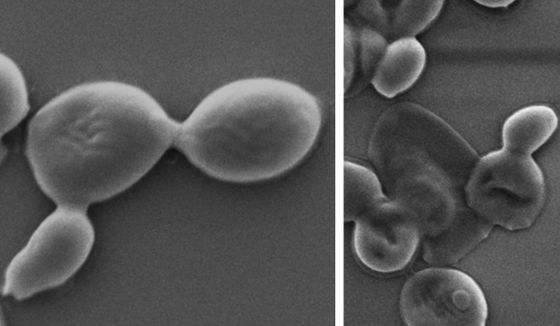Introducing a nano-coating material that kills 99% of microorganisms by 'physical attack', harmless to the human body even though drug-resistant bacteria can be killed

By coating a thin film of a material that has been in the limelight in the industrial field rather than medical care, a technology has been developed that can destroy the cells of bacteria and fungi that are pathogens. This nano-coating technology is
Broad-Spectrum Solvent-free Layered Black Phosphorus as a Rapid Action Antimicrobial | ACS Applied Materials & Interfaces
https://pubs.acs.org/doi/10.1021/acsami.1c01739
Superbug Killer: New Nanotech Destroys Bacteria and Fungal Cells, While Leaving Human Cells Unharmed
https://scitechdaily.com/superbug-killer-new-nanotech-destroys-bacteria-and-fungal-cells-while-leaving-human-cells-unharmed/
New Nanothin Coating Kills Superbugs, Fungi, Bacteria: Here's How It Works | Science Times
https://www.sciencetimes.com/articles/30657/20210414/new-nanothin-coating-kills-superbugs-fungi-bacteria-heres-works.htm
Antibiotics such as penicillin are often counted as one of the 'great discoveries of the 20th century' because they have saved many lives since they were put into practical use. However, in recent years, drug-resistant bacteria that antibiotics do not work on have emerged, which has become a major problem in the medical field. According to a World Health Organization (WHO) survey, drug-resistant bacteria kill 700,000 people a year in 2019, and if new treatments are not developed, the death toll will be 1,000 by 2050. increased to million people, blow to the economy is the global financial crisis and the rise in the amount comparable to the estimated things to have been.
Therefore, a research team led by Dr. Aaron Elbourne of RMIT University in Australia focused on black phosphorus, which is an allotrope of phosphorus. It is a single-layer film of black phosphorus phospholene is, transistor and battery alternative to silicon, but has attracted attention as a material for solar cells, for which would be rapidly degraded when exposed to oxygen, the treatment is a very difficult material I am.
The research team, which focused on this property of 'rapidly decomposing when exposed to oxygen,' thought that the active oxygen generated by decomposition could be applied to sterilization, and made black phosphorus into a film with a thickness of nanometers. We conducted an experiment to confirm the antibacterial effect. As a result, it was confirmed that 5 types of bacteria including Escherichia coli and methicillin-resistant Staphylococcus aureus and 5 types of fungi including Candida auris, which is resistant to multiple antifungal drugs, are destroyed by 99% in just 2 hours. I did.
Below is a photomicrograph comparing E. coli before and after the experiment. The E. coli before exposure to the black phosphorus nanocoating (left) has a clean cylindrical shape, but the E. coli after exposure (right) has a distorted shape, and the contents of the cells are popping out. I understand.

The effect of black phosphorus, which destroys cells, was similar for Candida Auris.

While the black phosphorus coating was highly effective against both bacteria and fungi, it had no effect on cultured mouse or human cells. In addition, the research team believes that it has almost no long-term effects on the human body or the environment because it was completely decomposed within 24 hours from the start of the experiment.
'Black phosphorus is broken down in the presence of oxygen, which was a headache for precision engineering engineers like us, but microbes,' said Samite Warrior, co-author of the paper. It turned out to be an ideal killing property, which means that the problem quickly turned into a solution. '
'The nano-thick coatings we have developed are effective in tearing bacterial and fungal cells, so there is no counter-measure for microorganisms,' said Elborn, who led the research team. It will take millions of years for natural evolution to provide protection against such deadly physical attacks. '
The research team of Elborn and others has been working on the development of various bactericidal materials, and in 2020, they will also announce a minute liquid metal that physically tears and destroys bacteria.
Announcing technology to 'physically tear and destroy' 'super bugs' that antibiotics do not work with liquid metal --GIGAZINE

Related Posts:
in Science, Posted by log1l_ks






